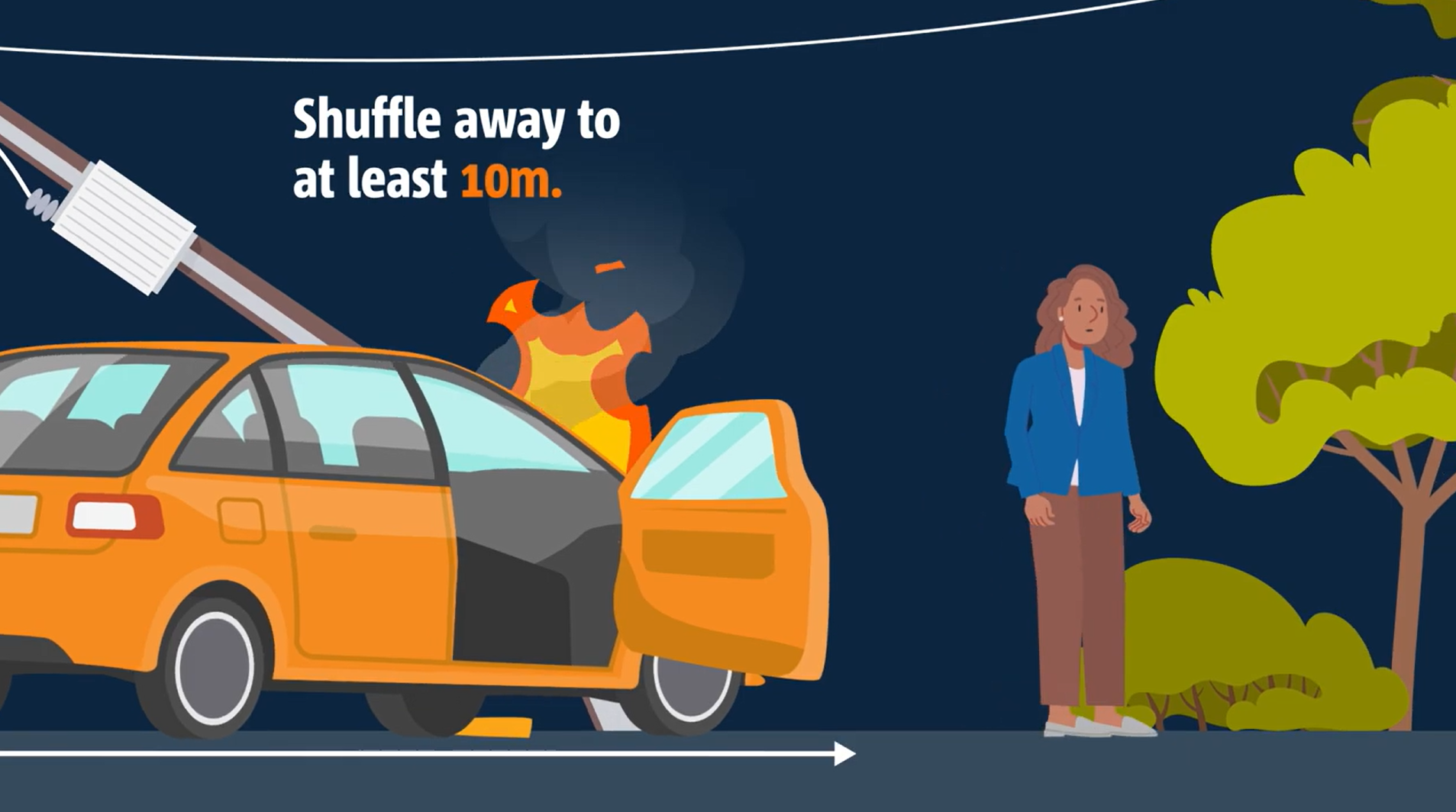Keeping safe around fallen powerlines
A fallen powerline is an extreme, potentially life-threatening emergency that requires immediate, informed action. If you see a fallen, broken, or low-hanging wire, you must assume it is live and dangerous.
What causes damage to powerlines?
Powerlines are robust, but they can be brought down by several factors common in the South Australian environment:
- Severe weather: High winds, storms, and lightning strikes are primary causes, often causing fallen trees or wind-blown debris to impact the wires.
- Road accidents: Vehicles colliding with power poles (Stobie poles) can cause wires to break and fall to the ground.
- Trees and animals: Falling trees or branches can bring down lines. Animals, such as birds or possums, can also cause faults by bridging the gap between live wires.
- Equipment failure and vandalism: General wear over time or deliberate acts can damage infrastructure.
The invisible danger: Why you must stay back
You do not have to touch a powerline to be electrocuted. Electricity can travel through the ground and surrounding objects, creating a serious hazard for anyone who gets too close.
| Step potential | When a live wire hits the ground, the electricity flows outwards, fanning out through the soil. This creates an invisible, electrified field where the voltage decreases the further you step away. If your feet are in two different voltage zones (i.e., you are walking normally), the voltage difference can travel through your body, causing a severe or fatal electric shock. |
| Touch potential | Electricity can instantly energise anything the powerline touches, including metal fences, trees, water, or a vehicle. Touching any of these objects while standing on the ground creates a path for the electricity to travel through you. |
| Arcing or jumping | You don't need direct contact to be hurt. Electricity can "arc" or "jump" through the air to a nearby object or person. |
First responders and fallen powerlines: critical safety reminder
We’ve seen an increase in council workers, contractors and members of the public — trying to move or rehang fallen powerlines before our crews arrive. While often well-intentioned, this is extremely dangerous.
Fallen powerlines can still be live and pose a serious risk of electric shock or electrocution. Always assume wires are live, stay at least 10 metres away, and report fallen powerlines immediately by calling 13 13 66.
Only trained SA Power Networks crews are authorised and equipped to make the area safe.
Download our “Staying safe around fallen powerlines” flyer — Share this with your team to help keep first responders and field workers safe at wires down incidents.
What to do if you see a fallen powerline
Wires on the ground (Public safety)
- Stay back: Maintain a distance of at least 10 metres (the length of a bus) from the fallen line and anything it is touching.
- Warn others: Keep bystanders, vehicles, and pets well clear of the area.
- Never touch or move: Do not attempt to move, roll up, or secure the fallen wire, even with non-conductive materials. Always assume the line is live.
- Call immediately: Report the incident to SA Power Networks on our 24/7 emergency line: 13 13 66. If there is a fire or life-threatening situation, also call 000.
If your vehicle contacts a powerline or Stobie pole
Your vehicle may become energised. Follow these steps:
If safe to stay inside:
- Stay in the vehicle
- Call SA Power Networks on 13 13 66
- Warn others to stay atleast 10 metres away
If you must evacuate (e.g., fire):
Use the Jump and Shuffle technique:
- Jump clear – don’t touch the vehicle and ground at the same time.
- Land with feet together
- Shuffle away – keep feet together and slide them without lifting.
- Move at least 10 metres away
Watch the jump and shuffle video for a clear demonstration.
Frequently Asked Questions
It may still be live. Never rely on appearance—assume danger.
No. Do not roll up wires or tape them to poles. Wait for SA Power Networks.
Resources & Emergency Contacts
SA Power Networks
|
13 13 66 |
Emergency Services
|
000 |
Working Safely Near Powerlines – SA.GOV.AU
|
Visit SA.GOV.AU |
